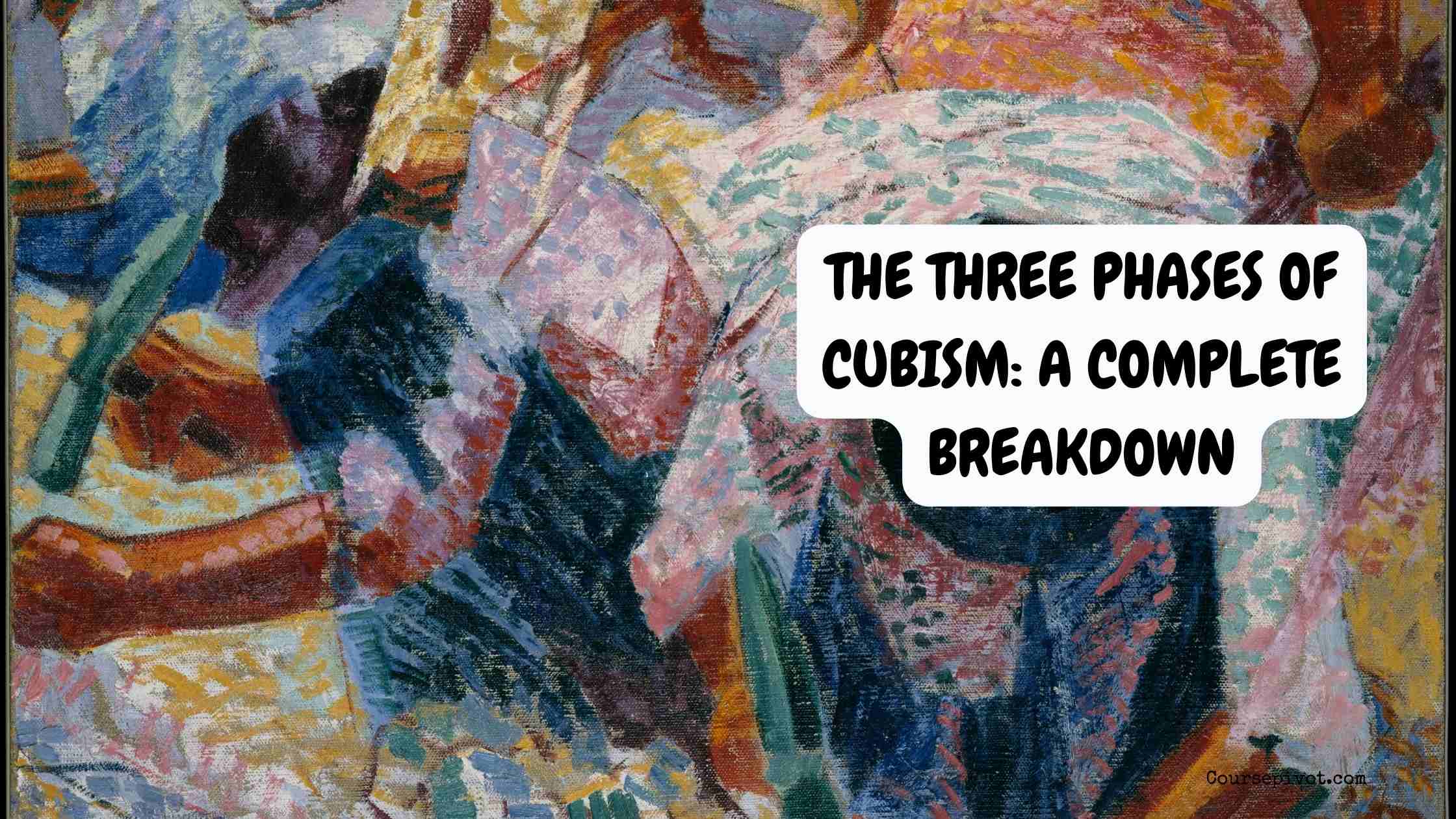
The Three Phases of Cubism
Cubism was one of the most revolutionary movements in modern art, and it didn’t just appear overnight. It developed in three distinct phases, each pushing the boundaries of how we see and represent the world. If you’ve ever looked at a Cubist painting and wondered, “Why does it look like that?”, understanding these phases will help you appreciate the evolution behind the movement.
🎨 1. Early Cubism (1907–1909): The Foundation
Also called “Proto-Cubism”, this phase marked the birth of the Cubist style, largely led by Pablo Picasso and Georges Braque.
Key Features:
- Inspired by African tribal art and Paul Cézanne’s geometric simplification.
- Began breaking down forms into basic shapes—cubes, cylinders, and cones.
- Still retained a sense of depth and recognizable subject matter, but things looked more fragmented.
Example: Picasso’s groundbreaking painting “Les Demoiselles d’Avignon” (1907) shocked audiences with its flat, angular forms and unconventional perspective.
🟫 2. Analytical Cubism (1909–1912): Breaking Down Reality
This is the most intellectual and abstract phase of Cubism. Artists weren’t just painting what they saw—they were analyzing it.
Key Features:
- Objects were deconstructed into overlapping planes and multiple viewpoints.
- Used monochromatic color schemes (mostly browns, grays, and ochres).
- Focused on structure and form, often eliminating depth and space.
- Viewers had to mentally “reconstruct” the image to understand what was being shown.
This phase challenged the viewer to engage with the artwork—almost like solving a visual puzzle.
📦 3. Synthetic Cubism (1912–1914): Building It Back Up
After breaking forms down completely in Analytical Cubism, artists began putting elements back together—but in new, creative ways. This gave birth to collage and mixed media in modern art.
Key Features:
- Introduced brighter colors and more playful compositions.
- Artists used real-world materials like newspaper clippings, wallpaper, and fabric.
- Reintroduced simplified, more recognizable shapes, making works more accessible.
- Less about analyzing and more about constructing meaning.
Example: Picasso’s “Still Life with Chair Caning” (1912) is a famous Synthetic Cubist work using oil cloth and rope as part of the artwork.
Cubism was far more than a stylistic change in painting—it was a philosophical shift in how people thought about reality, perception, and even time. When Pablo Picasso and Georges Braque began experimenting with fragmented forms in the early 1900s, they weren’t just trying to be rebellious. They were responding to a changing world—a world shaped by industrialization, Einstein’s theory of relativity, and the breakdown of traditional beliefs about space and time.
- Read our blog on 3 Reasons Why America Lost the Vietnam War
That’s why the three phases of Cubism—Early, Analytical, and Synthetic—feel so much like an artistic evolution that mirrors a broader intellectual revolution. Cubism was born in a time when people began to understand that reality wasn’t fixed, that what we see depends on how we look at it. Artists started questioning the old rules of perspective, representation, and storytelling in art. This wasn’t just an aesthetic decision; it was a reflection of cultural and scientific upheaval.
Cubism also helped bridge the gap between art and language. Especially during the Synthetic phase, when artists began incorporating letters, sheet music, and text into their work, they blurred the line between visual and verbal communication. This wasn’t random—it was intentional, emphasizing that meaning could come from symbol, suggestion, or even texture, not just image.
And let’s not forget: Cubism paved the way for nearly every major art movement that followed—Futurism, Constructivism, Abstract Expressionism, and even Pop Art. Its influence extended beyond painting to sculpture, architecture, graphic design, and even film. The idea that a subject could be broken down, rearranged, and reinterpreted was radical, and it changed modern art forever.
So, when we talk about the three phases of Cubism, we’re not just charting the timeline of an art movement. We’re tracing the journey of how 20th-century art began to question reality itself. From the raw energy of Early Cubism, through the cerebral dissection of Analytical Cubism, to the creative reconstruction of Synthetic Cubism, each phase pushed art toward something new, challenging, and deeply human.
In the end, Cubism didn’t just change how artists painted.
It changed how people think, see, and interpret the world.
Cite this article
You can copy and paste your preferred citation format below.
Martin, L. & Arquette, E.. (2025, May 26). The Three Phases of Cubism. Coursepivot.com. https://coursepivot.com/blog/the-three-phases-of-cubism/



